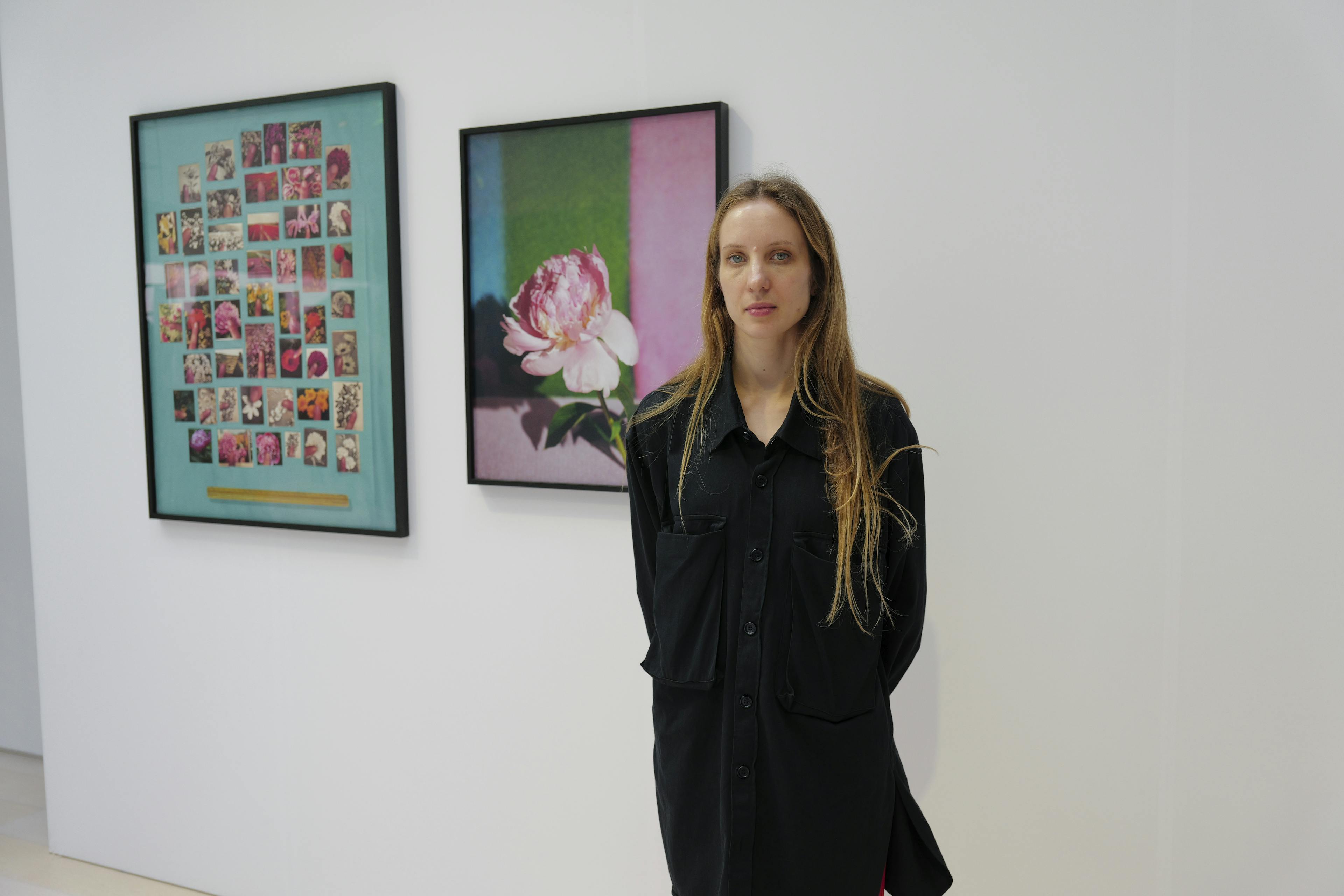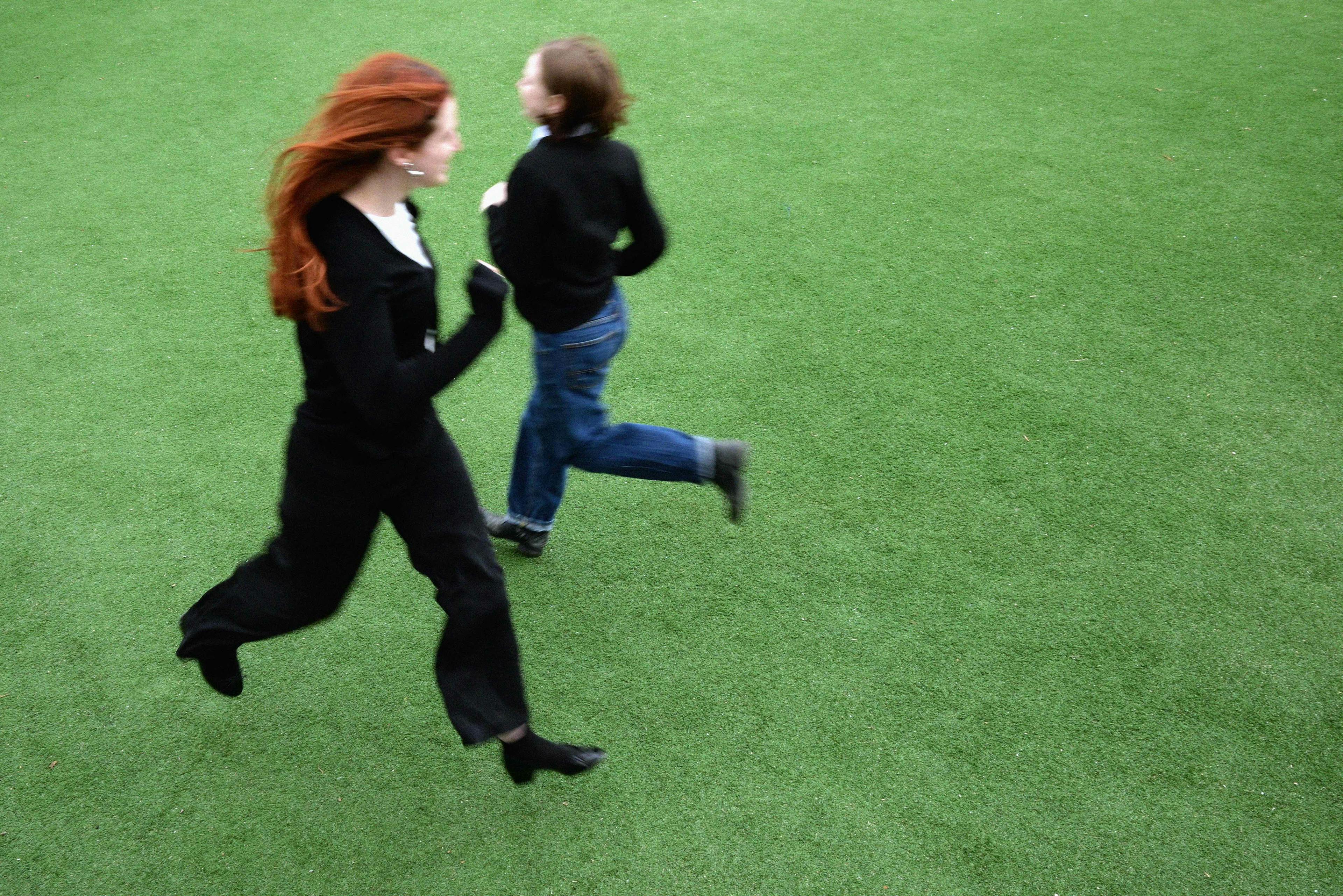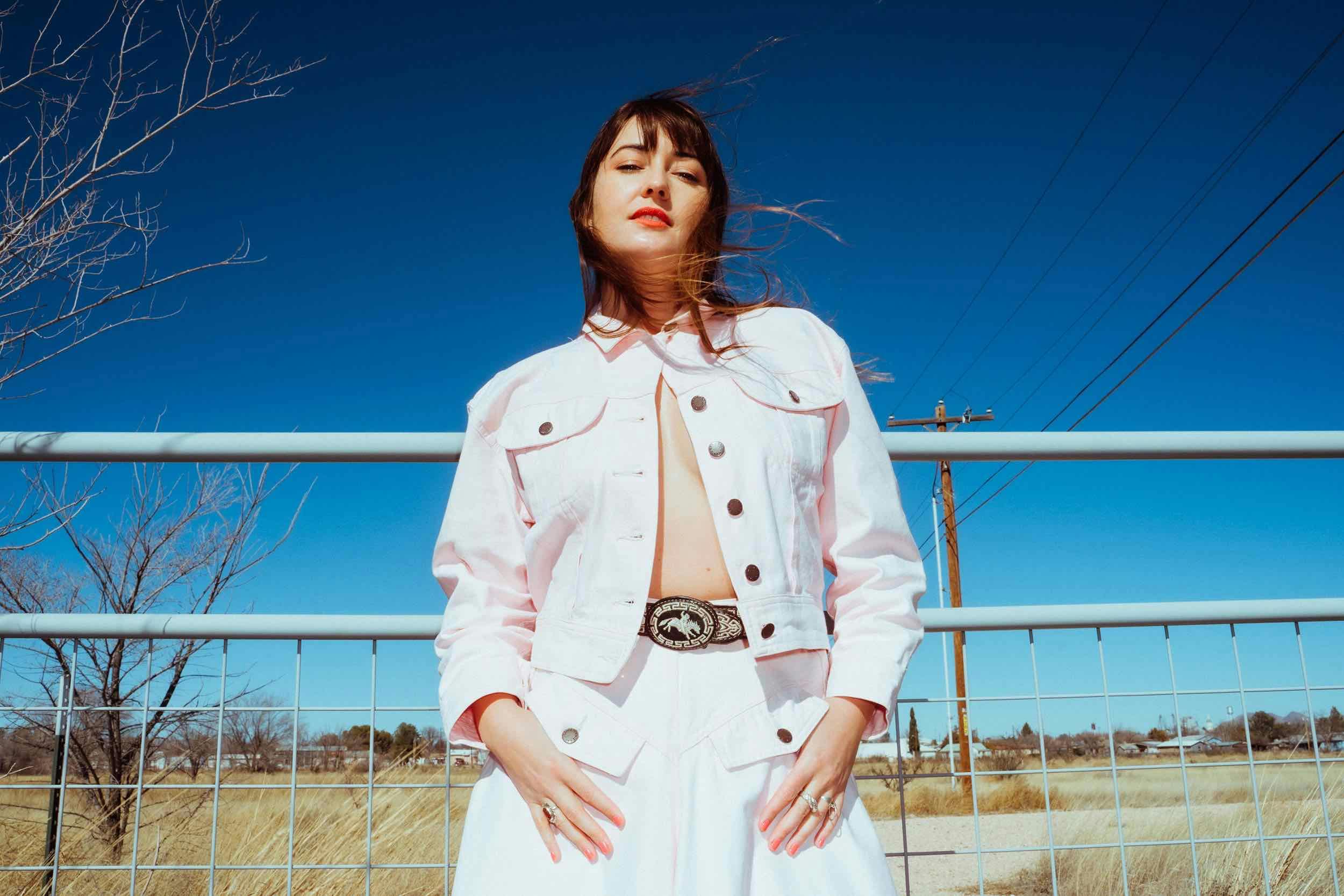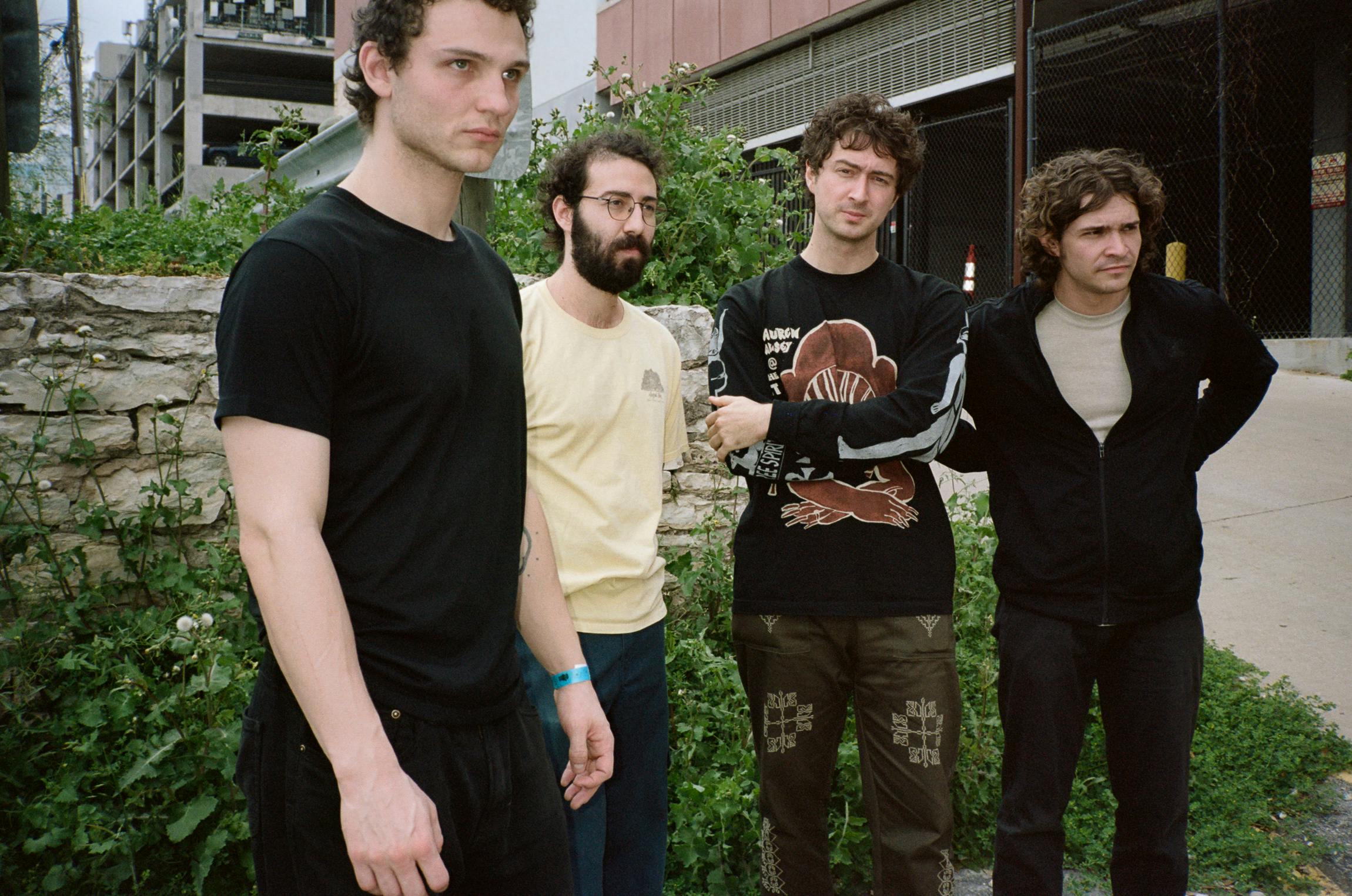At Frieze New York, Sara Cwynar delves into the essence of visual value and beauty.

Published
For her collaborative project with niche luxury beauty brand POIRET, at Frieze New York, Sara Cwynar showcases a series of artworks that delve into the themes of value and beauty as captured in imagery.
In her macro photographs of peonies, on view now through May 5th, Cwynar arranges the blooms into vivid still-life compositions that echo traditional paintings, encouraging viewers to ponder the ephemeral nature, allure, and delicacy commonly linked to cut flowers.
A striking contrast is presented with an image of 15th-century armor, combined with a collage of numerous women's hands interacting with the static figure by delicately holding everyday objects typically associated with femininity and domesticity. This juxtaposition challenges the conventional image of the stoic male warrior often imagined in the armor.
In her new piece comissioned for Frieze with POIRET, "Encyclopedia Grid (Flowers)," Cwynar explores the construction and dissemination of knowledge. This work features a structured array of vintage floral prints from old books and encyclopedias, with her finger pointing out details in the imagery. Included in this arrangement are three synthetic, AI-generated images, highlighting the artificiality in the reproduction of knowledge.
Echoing the innovative spirit of its namesake, the French designer Paul Poiret, POIRET finds a reflection of its legacy in Cwynar’s work—her art challenges established norms and invites thoughtful examination of the complex interplay between imagery, individual identity, and broader societal constructs.
This project not only reflects the pioneering spirit of POIRET, but also underscores the brand's philosophy of exploring new aesthetic values through art. The presence of POIRET at Frieze New York—complete with a lounge offering interactive experiences and a glimpse into its advanced skincare collection—serves as a testament to the brand's global vision and its seamless integration of luxury beauty with the dynamic world of contemporary art. As visitors engage with both the art and the immersive digital roulette game, they experience the essence of POIRET: a fusion of timeless elegance and modern audacity.

Sara Cwynar at POIRET lounge, by Craig Barritt for POIRET
Can you tell me a little bit about your practice in your own words and what your goals are as an artist?
I make photographs, videos, installations, and some performances. I use a lot of existing imagery and reconstitute it, re-photograph it, and rework it into new things. At the heart of it, it's a critique of how images work, how design works, and how images and photography serve design and capitalism. It also shows how these things seduce us and keep us connected to the world but stuck in the same cycle.
Which is sort of the inevitable aspect of the image.
Yeah. And I think a lot about beauty and how subjective that is, and trying to make things that are really, really seductive, but not quite doing what they seem like they're doing. Which is constantly shifting. Sometimes I feel like I figured it out, and sometimes I feel like I miss.
Is beauty a powerful thing to you? What does it mean to you when something is beautiful?
One thing I'm always really interested in is ideas of value and beauty. How, for example, on eBay, something can sell for $2 from one person and $100 from another. There are some things that we've been told are universally important or beautiful, but it’s important to kind of pick apart how things get standardized or collectively agreed upon. And a lot of that happens through images.
I think when something's beautiful, it kind of has a logic and sort of justifies itself. I'm always trying to take as many random things as possible and put them into something that still makes sense. And push that as far as I can. So, to me, if it's still beautiful in my version of it, it makes sense. And it justifies itself.

I love the idea of beauty being driven by logic because so often, beauty is described as fleeting, sort of an intangible thing. Can you tell me about the peonies?
I photographed the first one, while I was doing this video called Rose Gold, which was very intense and hard to kind of wrangle into something. It was really based on research, and I just wanted to photograph something that would be like, pleasurable. I didn't even photograph the first one thinking it would be an artwork. And then I just kept making them. I like having this one totally natural thing in my world of very synthetic images and how your eye kind of makes you think it's fake, even though it's real.
What about the pins in the peonies? I read that if you poke a hole in the stem of a tulip, it'll last longer, which is just so mind-boggling. And I think like kind of just the way people think about women or beauty in some ways. So, I'm just curious about the pins.
I usually pin a whole bunch of extra petals to the flowers. I'm always trying to make the perfect flower, which is impossible because it's natural. And things are always falling off, I'm blasting light, and then the whole thing usually falls over at some point. And then I just can't photograph it anymore. But I usually leave one of the pins.
That's what it feels like to be like a person.
It's so nice that you thought of it that way. It is about the fakeness of beautiful things, both in their colors and in their construction.

Sara Cwynar, Encyclopedia Grid (Flowers), commissioned for Freize with Poiret.
Your work also deals with knowledge or information. How does that relate, in your specific practice, to the idea of the image or to beauty?
The first art project I ever made was an encyclopedia. And it was like reorganizing all these entries in various encyclopedias. And a lot of research I did around the idea of kitsch, like an expanded idea of kitsch as this kind of type of idealized imagery that we look at to ignore what's not a strategy appealing about life. But I guess a lot of my work comes from combining tons of information, then pulling out connections between things, or finding something that feels contemporary in the past.
Can you tell me a little bit more about this new work, Encyclopedia Grid (Flowers), commissioned for Freize with POIRET?
I make these encyclopedia grid projects, where I comb all these encyclopedias and find the same entry over all the different versions, over many years. I've done ones that have a lot more kind of political content in them, like “banana.” At first, you can see the actual production of bananas and the people who harvest bananas, and then later on, we're more correct, it’s just a banana, like so. So it's kind of about the history of photography. With the work I made for Frieze with POIRET, I was thinking about the representation of nature and how, as I mentioned, it’s kind of synthetic and constructed actually. I've been thinking about, like, National Geographic and how everything is sorted through the lens of someone's idealized version of nature. And it's not just like, going out and snapping the picture.
Right, it’s not like the flowers just appear.
Yes, exactly. I did a lot of research about how cut flowers get here. It's ultimately not that interesting. But Peonies are originally from China. The Dutch took them over, and it became this huge global industry. So there’s one flower in the grid that’s an AI picture. I usually try to hide something in my work, so for this one, I put some fake flowers.
I'm going to go and try and to guess which one it is.





